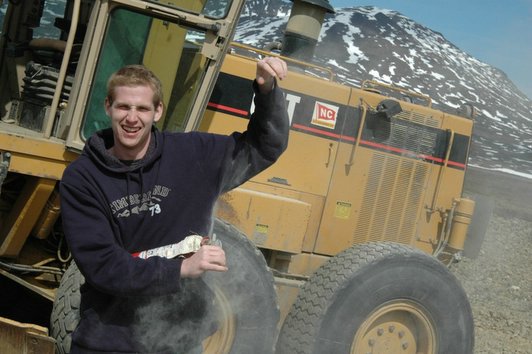The Good Old Days
In my last post, about a white-looking Mestizo basketball hopeful, I suggested that if his hoops career hit a dead-end, he should just become an artista. But a reader wisely shot down this notion. If the young lad indeed has blond hair and blue eyes, he's too white for telenovela directors, who prefer their mestizo actors with Eurasian features and dark hair and eyes. Olats for you, pare! This is true. When I appeared in Bakekang as the titular character's baby's daddy, I was playing a white American. This wasn't much of a stretch. I am a white American. But the director still sent PAs scurrying off to the Hi-Top Supermarket on Quezon Avenue to buy sachets of Creamsilk black conditioner to darken my coif.
My astute reader offered the consolation that the white guy could still pose for SM print ads and billboards, and I'd like to tack on a few more tacky local brands like JAG and Lee Pipes (a personal favorite) that seem to believe in the perhaps antiquated, perhaps true notion that the best way to sell junk in the Philippines is to slap a white face on it. Something inside me writhes and cringes every time I write a sentence like that, but I believe there is still hope. The "American = good" equation that is the scourge of some Pinoy advertising seems to be on the decline. From what I can tell, Philippine popular culture in the 1970s and '80s was way more saturated with clumsy Amboy-themed advertising than it is now. My basis for this observation is print ads I saw in volume after volume of old sports magazines like Champ and Atlas Sports Weekly, which I read as part of my basketball research, and old commercials on YouTube.
Check out this classic, Dragon Katol:
And then this doozy, Old Captain Rum:
And, perhaps the Philippines' greatest employer of non-professional white actors, tobacco companies. Thank you, Lucio Tan!
Looking at these commercials, I have mixed feelings. The thought that Philippine businesses have such low opinions of consumers that they aired this schlock and presumably profited from it leaves a bad taste in my mouth. Of course, advertising in any country relies on some lowest common denominator appeal, so we should get too holier than thou with the Philippines. But the racial subtext of the commercials, in which a couple of white folks slapping each other and taking Tagalog mispronunciation to dizzying new heights can sell a mosquito coil better than Pinoy actors, is a bitter pill to swallow, especially for a white guy like me who tried to live responsibly and respectfully during my time in Manila.
On the other hand, how fun would it have been to be the Dragon Katol guy? You get to wear a cowboy hat, slap yourself and butcher a language, and at the end of the day, you get paid. Does this guy know that he's a pop-culture reference now, that a generation of Filipinos can sit around laughing about the way he says "Lamok siguradong tepok!" That must be fun. Likewise, beating down a gorilla who stole your woman and then befriending him over a bottle of old captain rum is something I'd like to put on my TV resume. And playing Jai Alai for Champion Cigarettes? The bomb. In regards to starring in funky advertisements, I definitely missed the boat during my stint as a white man in Manila.
I should also mention that Philippine consumers, who may have been earnestly underestimated by the advertisers, have flipped the script and turned the question into something more confusing and meta, by re-appropriating these awful commercials as treasured bits of YouTube kitsch. The Champion commercial that I embedded is one of 84 clips uploaded by a user named Flagwavercharacter, which are titled "Pinoy Memories" 1-84. The wildly popular recent Alaska Milk commercial starring Willy Miller, which contained clips of a 1974 Alaska commercial featuring Cisco Oliver's noble failures at pronouncing phrases like "Galing mo!" and "Masarap?", brought that retro cleverness into the mainstream. It was like saying, "Damn, we were on some silly shit back then!" and everyone loved it. For months, kids ran around giggling to lines like "Alaska man!" I wouldn't be surprised if they still are.
You keep peeling off the layers, and the story keeps getting more complicated. You might was well laugh along the way.



